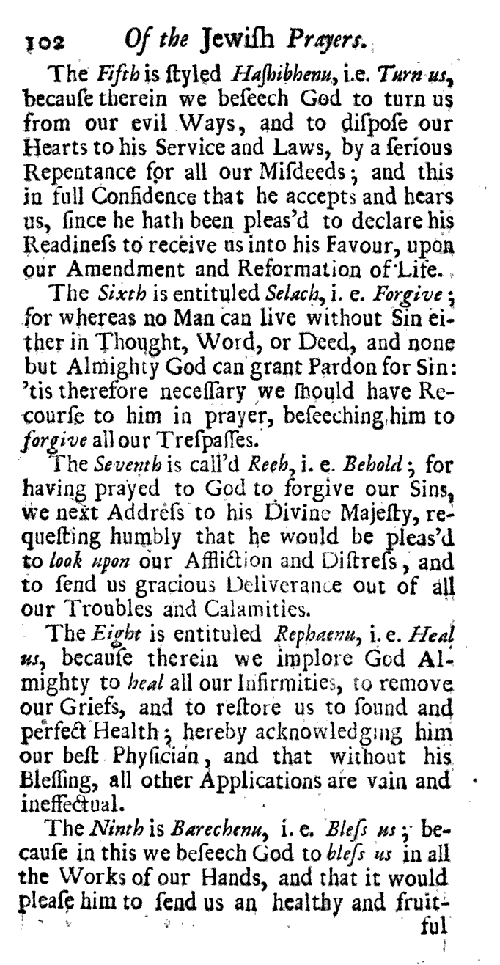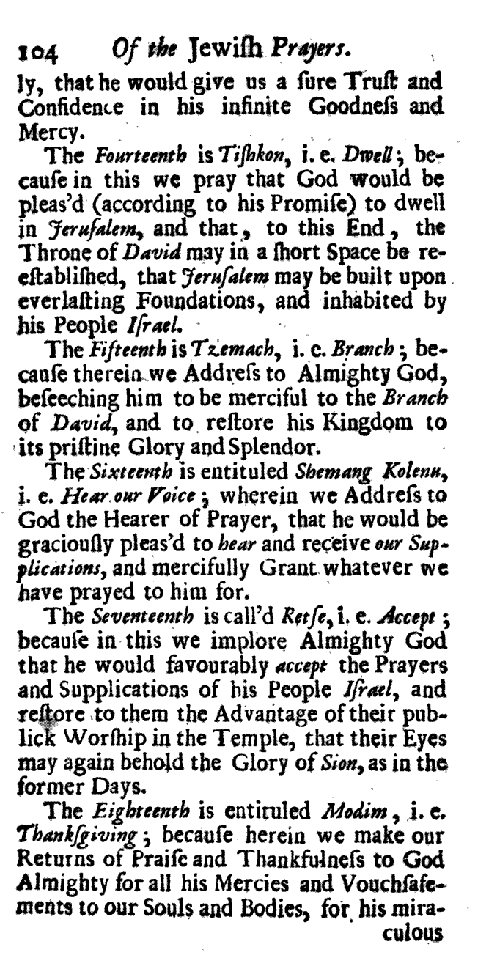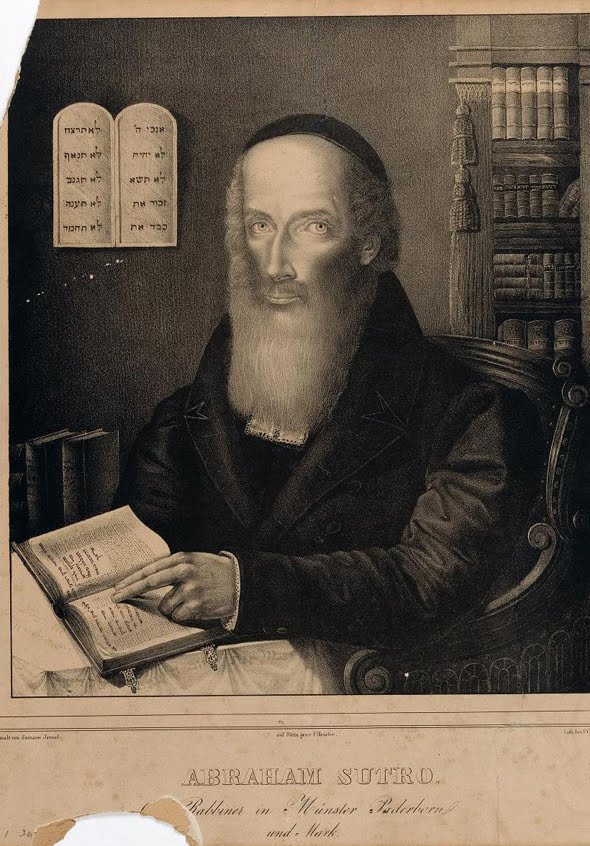
Here is the first prayer to Mary:

Another sample page:










The Sedarim of the Triennial Pericopes exhibit the second division of the text. The Grammatico-Massoretic Treatise which precedes the Yemen MSS. of the Pentateuch distinctly declares that the Sedarim are the Pericopes of the Triennial cycle which obtained in many communities. "There are," it says, "places where they read through the law in three years. Hence the Pentateuch is divided into one hundred and fifty-four Sections called Sedarim, so that on Seder is read on each Sabbath. Accordingly the Law is finished at the end of every three years.He continues to explain that as this was a very old practice, almost no manuscripts give the sedarim, although they generally do state at the end of each book how many sedarim are in it. He quotes Jacob ben Hayim's introduction to the Second Rabbinic Bible (commonly called Mikra'os Gedolos) where he states that if he had access to a list of the sedarim then he would have followed it, instead of the Christian chapter divisions! Eventually he did discover such a list, but only at the end of all his work, so it was printed separately (at the beginning of the Bible) rather than incorporating it into the work itself. As you can see, he felt that this is valid masoretic information, and it should be printed so that it isn't lost. Actually, he would have marked it in the Bible itself instead of the Christian chapter divisions.

Of the Codices of Cairo, London and Leningrad I have with me complete photographs, and of that of Aleppo as much as I could copy at the place.I don't know much about this Bible, although I know that it was not well received in the community of Bible scholarship either. Someone told me that he obtained a copy having found one in a shemos box in a shul. He asked the rabbi's son if he could take it, and after looking at it the reply was "Cassuto? Doesn't sound very Jewish. I have to see." In other words, he was only willing to let him take this discarded Tanach if he could be sure that it was a kosher edition. Having received such an assurance from his father, he let my friend take it.








"Today, although this problem is gradually being lessened, young man will have to form themselves into rabbis. But where shall this be done? In Yeshivos? There is there one thing taught which actually pertains to the rabbinate? Everything there has a polemical tendency, and the most one can get out of it is perfecting Dialectic - but what else? Not even Casuistics (i.e., the study of responsa) or practical halacha, let alone exegesis and hermenutics, homiletics and rhetoric. A youth spends many years in the Yeshiva and all he has to show for it to belong to the rabbinate is to teach himself everything, becoming an autodidact."







"They also do not realize what anyone who knows current events does, regarding prisons, specifically in Siberia, where the harshness of the punishment for rebels and murderers is that they are no longer referrred to by their name. They are only called "1st, 2nd, 3rd" in order that they should not be remembered and counted any more. Think of the foolishess of these fools. They think by calling people to the Torah in this way that they're honoring them, but actually they are degrading them, causing them to be like people without names like low people. Really we should be very sad for them; and by maintaining our practice we fulfill 'forsake not the teaching of thy mother.'









As the title indicates, there is a phenomenon of facts that may not be so factual, yet which get repeated so often they become fact. One such example is the following: Rabbi Moshe Margaliot (d. 1780), author of the Pne Moshe commentary on Talmud Yerushalmi and a rebbe/ tutor of the child who would grow up to the Vilna Gaon, enrolled in the University of Frankfurt an der Oder when he was middle aged to study botany so that he could better comprehend the agricultural content of the Jerusalem Talmud!
Apparently Margolis used manuscripts to clarify textual variants and spent no little time in the Department of Botany at the University of Frankfurt an der Oder in order to prepare himself for the composition of his commentary on Seder Zera'im.(Reiner, Elchanan "Beyond the Realm of the Haskalah - Changing Learning Patters in Jewish Traditional Society," Jahrbuch Des Simon-Dubnow-Instituts VI 2007, pg. 130.)

"We know very little about the life of the great commentator on the Palestinian Talmud. I shall, however, mention one very interesting fact about him. On August 11, 1779, shortly before his death - he must have been about seventy! - he registered under the name of Moses Margelit (in his native country he certainly pronounced his name Margolis!) as a student of botany at the University of Frankfort-on-the-Oder. One is safe in assuming that his eagerness to acquire botanical knowledge was prompted by his desire to be better prepared for the study of the first order of the Palestinian Talmud, which deals chiefly with agricultural laws, for the understanding of which some botanical knowledge is indispensable. For the same reason "the Gaon of Wilna" had spent some time with farmers, for in Poland no opportunity was given to a Jew to register at a University."
"According to the records of the University of Frankfort-on-the-order [sic], on August 11, 1779, an M. Margoliot enrolled as a student. If this is indeed our M. Margoliot then shortly before his death, at the age of about 69, he registered as a student of botany presumably because he hoped thereby to gain a better understanding of the first order of the Palestinian Talmud which deals chiefly with agricultural law."

That sounded pretty convincing to me a year ago, but of course this is an expert on Yerushalmi, not an expert on German university registration records, and I don't know if he even saw the entry.


What's up with the author of the Letters Ten-Plus-Nine?Has he switched and become Geiger or Holdheim?For he wrote to Shadal in the language of Germania,Not in the language of Jerusalem and Judea.




